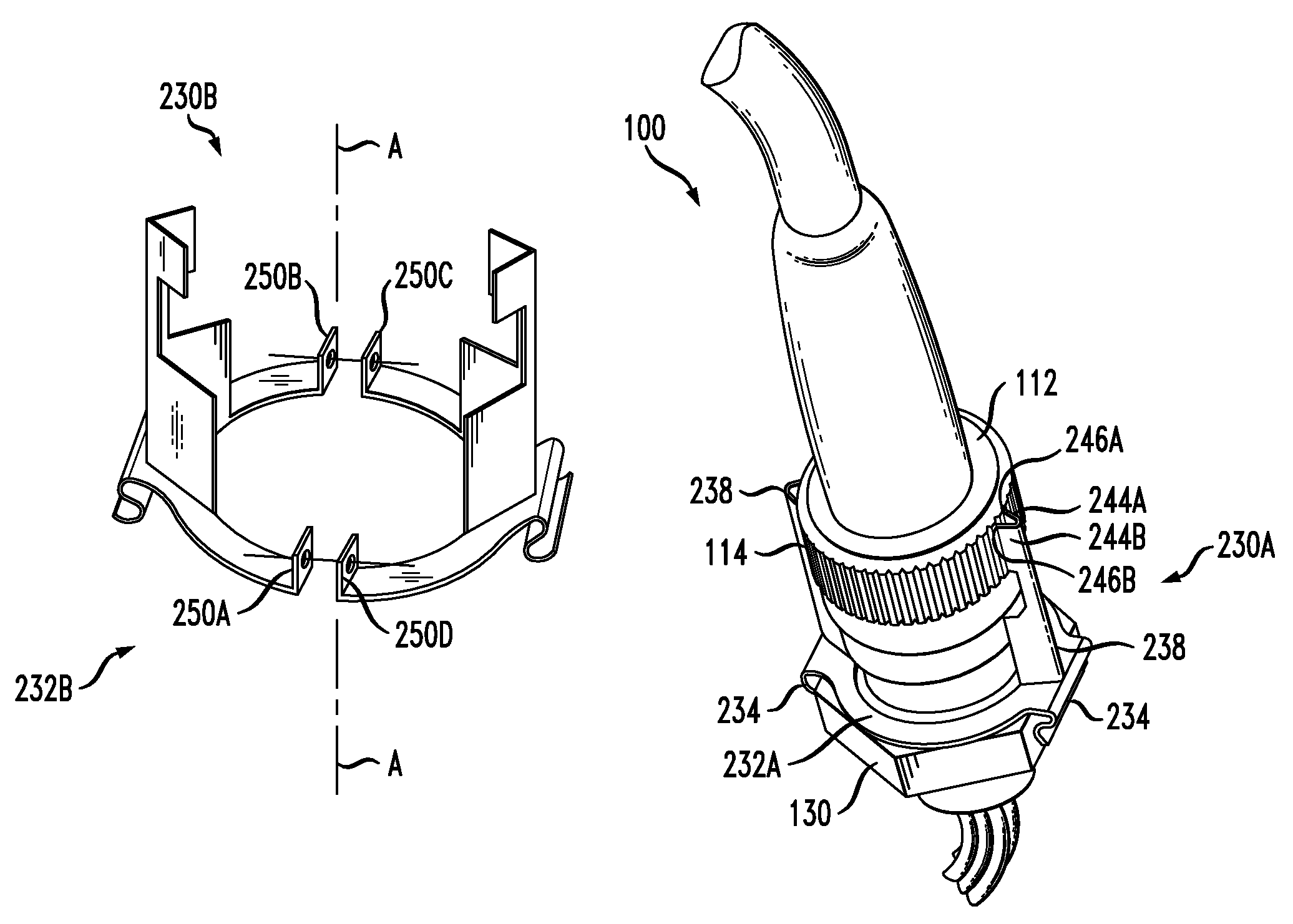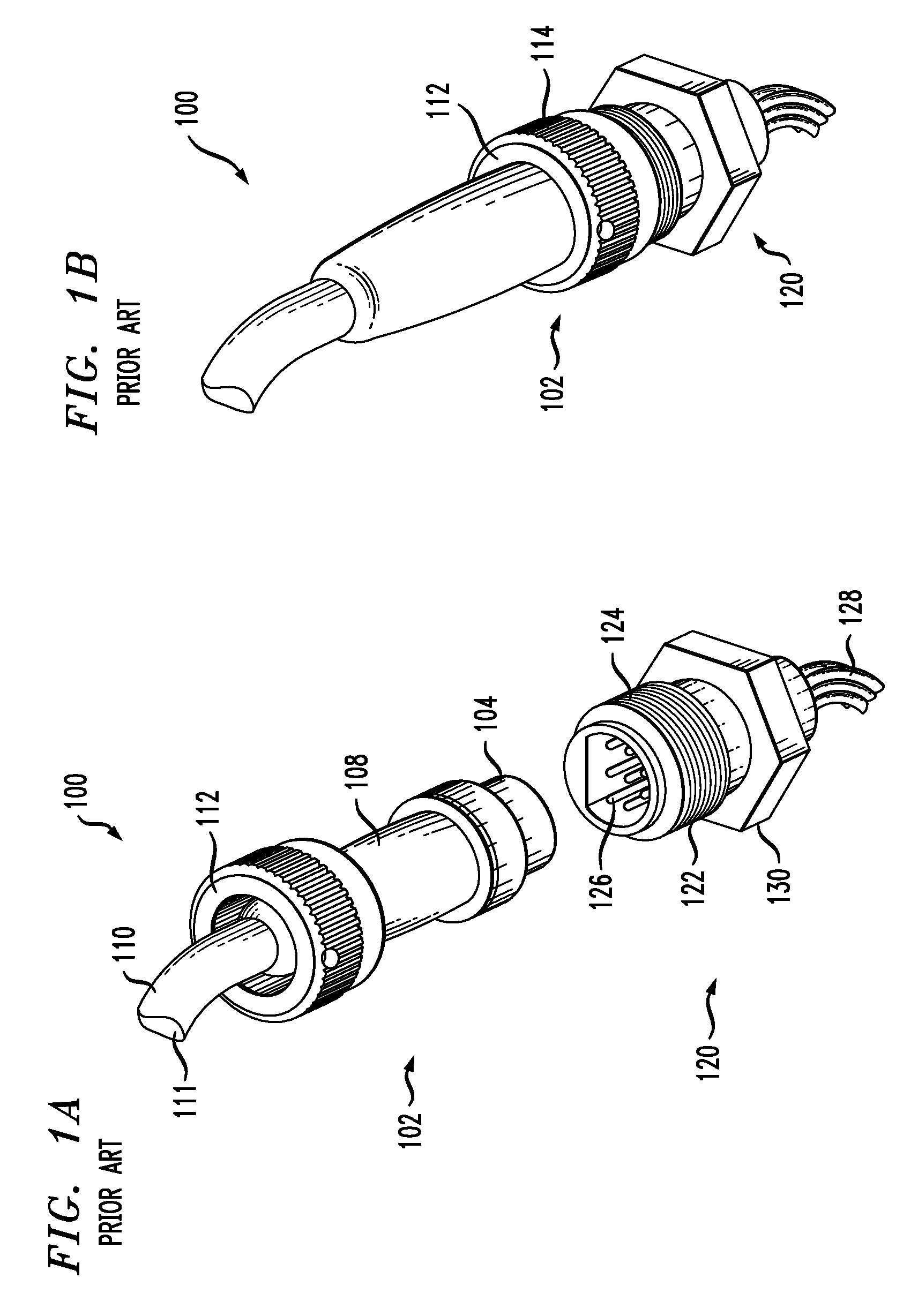Anti-Decoupling device for a spin coupling
- Summary
- Abstract
- Description
- Claims
- Application Information
AI Technical Summary
Benefits of technology
Problems solved by technology
Method used
Image
Examples
Embodiment Construction
[0027]FIGS. 1A and 1B depict, via perspective views, the salient elements of a conventional, two-part electrical connector 100. FIG. 1A depicts connector 100 in a disconnected state and FIG. 1B depicts connector 100 in a connected state.
[0028]As depicted in FIG. 1A, a female connector portion 102 of connector 100 includes body 104, cable strain relief 108, sheath 110, and spin coupling 112, interrelated as shown. Electrical conductors 111 are disposed in sheath 110 and terminate, at body 104, in sockets (not depicted).
[0029]Male connector portion 120 of connector 100 includes body 122, screw threads 124, contact pins 126, electrical conductors 128, and hex mount 130, interrelated as shown. Pins 126 are electrically connected to conductors 128.
[0030]To electrically connect electrical conductors 128 to electrical conductors 111, female connector portion 102 and male connector portion 120 are pushed together into mating engagement. In this state, pins 126 are received by the sockets wi...
PUM
 Login to View More
Login to View More Abstract
Description
Claims
Application Information
 Login to View More
Login to View More - R&D
- Intellectual Property
- Life Sciences
- Materials
- Tech Scout
- Unparalleled Data Quality
- Higher Quality Content
- 60% Fewer Hallucinations
Browse by: Latest US Patents, China's latest patents, Technical Efficacy Thesaurus, Application Domain, Technology Topic, Popular Technical Reports.
© 2025 PatSnap. All rights reserved.Legal|Privacy policy|Modern Slavery Act Transparency Statement|Sitemap|About US| Contact US: help@patsnap.com



